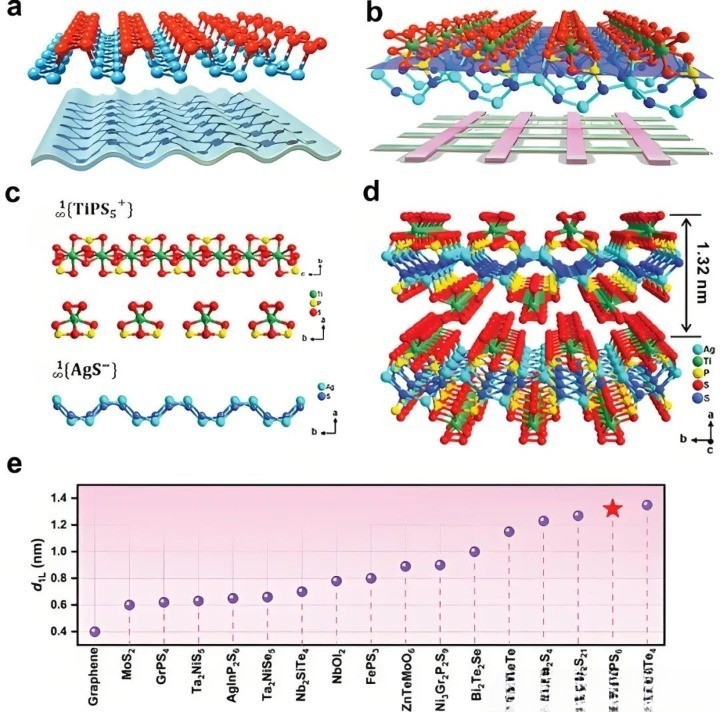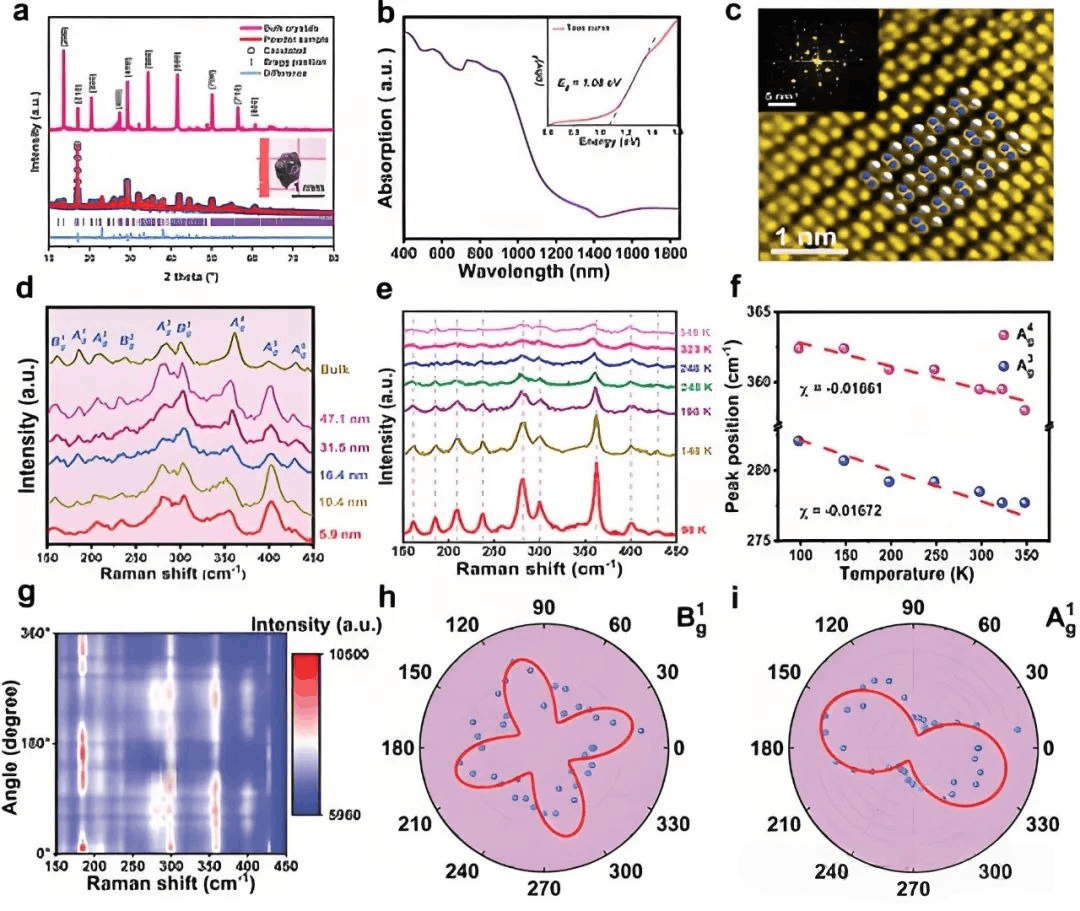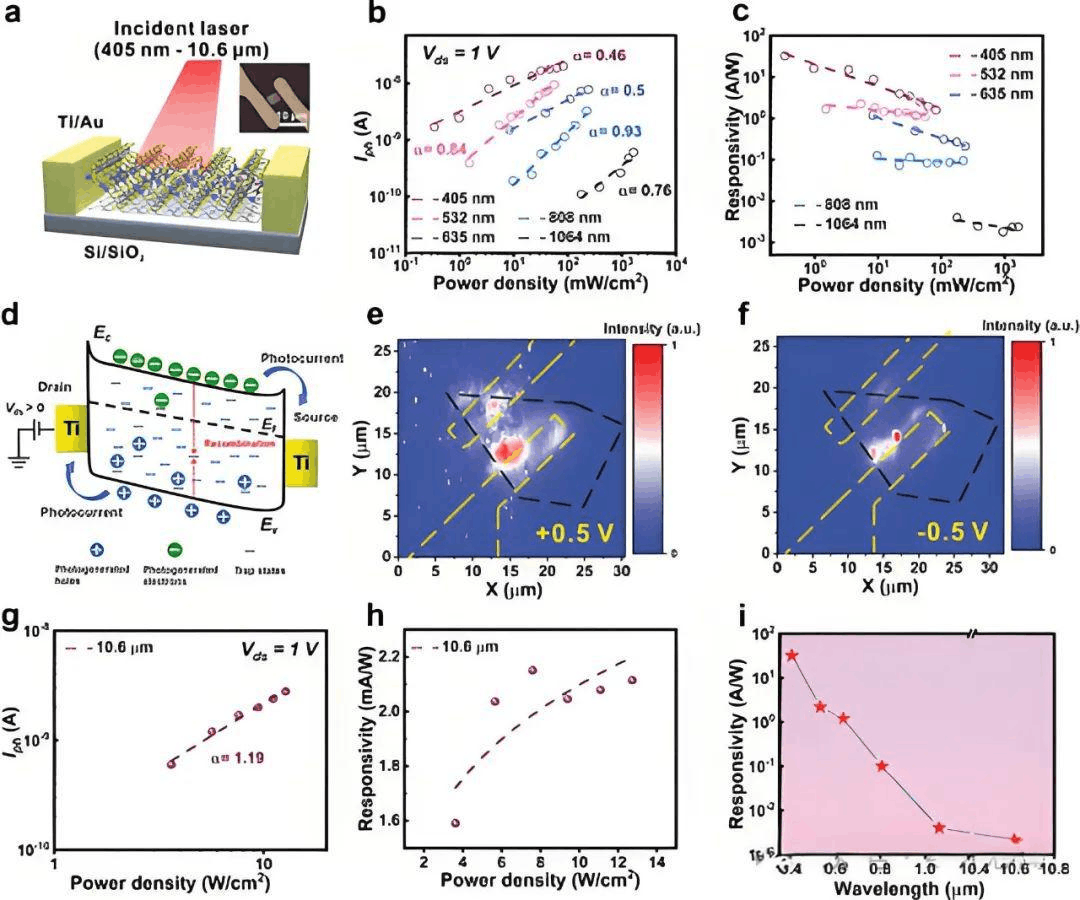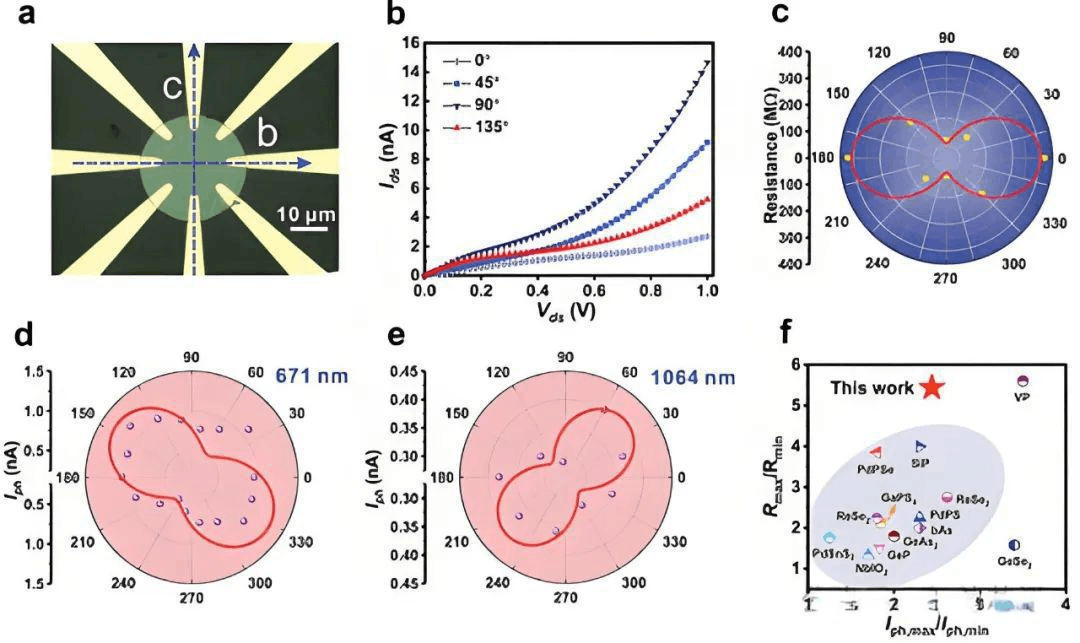Polarization-sensitive photodetectors can capture the polarization state of light waves, providing an additional detection dimension beyond wavelength and intensity. Compared to conventional photodetectors, this capability introduces unique degrees of freedom for information encoding and transmission, garnering significant attention in remote sensing, navigation, astronomical observation, and military applications. To achieve optimal polarization detection performance and multifunctionality, the active layer of polarization-sensitive photodetectors must incorporate low-symmetry structures with pronounced anisotropic behavior. Recent advancements in two-dimensional (2D) in-plane anisotropic materials have significantly enhanced material performance, offering new flexibility in developing and controlling polarization-sensitive photodetectors. This progress stems from these materials’ intrinsic structural anisotropy and high electron mobility. Consequently, 2D anisotropic materials are increasingly recognized as strong candidates for next-generation polarization-sensitive photodetectors, promising enhanced performance and simplified device fabrication.
2D in-plane anisotropic materials typically consist of one-dimensional (1D) twisted chains interconnected through parallel or antiparallel stacking. Their inherent low-symmetry crystal structures endow them with unique anisotropic electronic, optoelectronic, and thermal properties. Black phosphorus (BP), a representative 2D in-plane anisotropic material, has drawn extensive interest due to its puckered low-symmetry structure and has been widely explored for polarization-sensitive photodetection. Other systematically studied 2D anisotropic materials include SiAs, black arsenic (b-As), 1Td-WTe₂, GaTe, GeAs, PdPS, TaFeTe₄, and Ni₂P₂S₆. However, the limited bandgaps and suboptimal photoelectric conversion efficiencies of most reported 2D anisotropic materials restrict their functionality primarily to the visible spectrum, with few operating in the infrared regime. Additionally, some anisotropic 2D materials (e.g., BP, GeAs₂, and PbSnS₂) exhibit poor stability and environmental compatibility due to air sensitivity or toxic constituent elements. Notably, most existing anisotropic 2D materials show limited anisotropy, with low anisotropic conductivity ratios (e.g., BP, GeSe₂, SnS, and Nb₃SeI₇) and low dichroic ratios (e.g., GeS, GeSe, SiP₂, and ZrGeTe₄). In contrast, 2D materials with cross-stacked architectures—featuring unique 1D anisotropic chain structures and atomic arrangements—are expected to exhibit enhanced directional properties, leading to significant electrical and optoelectronic anisotropy while improving stability. However, no experimental reports on cross-stacked 2D anisotropic materials have been published to date. Thus, exploring novel cross-stacked 2D materials and systematically investigating their stability, environmental friendliness, and electrical/optoelectronic anisotropy holds critical scientific and technological significance.
Recently, a research team from Sun Yat-sen University, Tianjin University, and the University of Electronic Science and Technology of China discovered and introduced AgTiPS₆ atomic layers (Figure 1), a 2D in-plane anisotropic material with a cross-stacked structure, expanding the family of 2D materials. The low-symmetry crystal structure of AgTiPS₆ endows it with pronounced in-plane anisotropic optical, electronic, and optoelectronic properties (Figure 2). Combined with its relatively narrow optical bandgap (1.08 eV), AgTiPS₆ is suitable for developing broadband polarization-sensitive photodetectors. This study, titled “2D AgTiPS6: A Cross-Stacked In-Plane Anisotropic Semiconductor for Broadband and Polarization-Sensitive Photodetection”, was published in Advanced Materials.

Figure 1 Crystal structure of AgTiPS₆

Figure 2 Fundamental characterization and Raman spectra of AgTiPS₆.
Specifically, angle-resolved polarized Raman spectroscopy (ARPRS) and polarization-dependent reflectance spectra revealed periodic variations with the orientation of linearly polarized light, confirming AgTiPS₆’s significant structural and optical anisotropy. Electronic and optoelectronic characterizations were conducted on AgTiPS₆ nanowire-based phototransistors (Figure 3). Results indicate that AgTiPS₆ is an n-type semiconductor, with devices exhibiting a pronounced photogating effect.

Figure 3 Electrical and optoelectronic performance of AgTiPS₆ nanowire phototransistors.
The limited active area of nanowire devices resulted in weak photoresponse in the infrared spectrum. To address this, the team constructed a photodetector using thicker AgTiPS₆ nanosheets for broader spectral detection (Figure 4). Leveraging intrinsic light absorption and photothermal effects, the AgTiPS₆-based detector demonstrated broadband photoresponse from visible to mid-infrared wavelengths.

Figure 4 Optoelectronic properties of AgTiPS₆ nanosheet photodetectors.
Finally, systematic investigations into AgTiPS₆’s anisotropic electronic and optoelectronic properties—rooted in its low-symmetry structure—are summarized in Figure 5. AgTiPS₆ devices exhibited remarkable in-plane electrical and optoelectronic anisotropy, with a conductivity ratio of 5.44 and a photoresponse ratio of 2.44, surpassing most 2D materials. The exceptional stability and unique anisotropy of AgTiPS₆ highlight its potential as a robust candidate for anisotropic electronic and optoelectronic applications.

Figure 5 Electrical and optoelectronic anisotropy of AgTiPS₆ devices.
Conclusion
This study successfully synthesized AgTiPS₆, a novel quaternary in-plane anisotropic 2D semiconductor with n-type behavior and a bandgap of 1.08 eV. AgTiPS₆’s unique low-symmetry crystal structure—characterized by an unprecedented cross-stacked configuration—confers intrinsic optical, electronic, and optoelectronic anisotropy alongside outstanding environmental stability. Furthermore, AgTiPS₆ devices demonstrated superior in-plane electrical and optoelectronic anisotropy with axial orientation selectivity, outperforming other 2D materials. This work establishes AgTiPS₆ as a reliable candidate for polarization-sensitive photodetection, expanding the scope of 2D anisotropic materials and advancing research into next-generation anisotropic electronic and optoelectronic devices.





